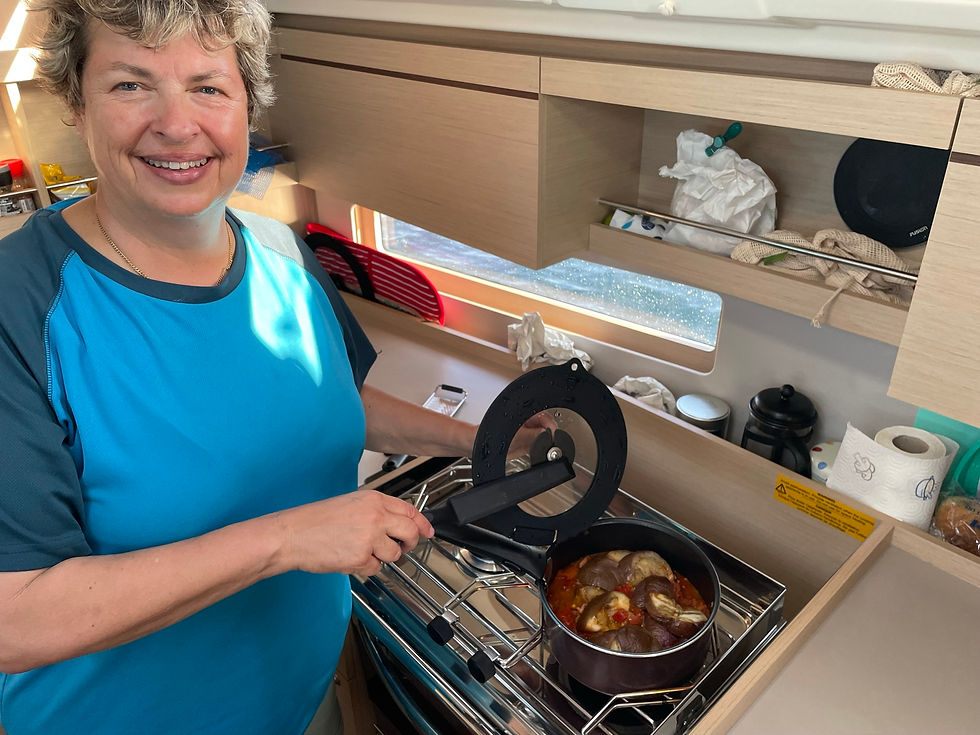The Sands of Time
- Richard Crooks
- May 29
- 4 min read
Updated: Nov 13
We’ve seen how tectonic activity around this part of Anatolia has razed entire ancient towns to rubble, and sunk ancient ports into the sea. Another geographic feature, that often leads to topographical change - dramatically affecting humans and other life - is the rivers, along with associated spits and estuaries.
We can all probably think of numerous examples of towns in England or France named “Some-place-on-Sea”, or “Quelque-chose-sur-Mer”, that are now miles-inland from the sea. Similar tectonic and fluvial processes also fundamentally changed ancient Caunos, into what is now - in my view - the most biblically-beautiful, and magical place, along this whole corner of Asia Minor.
In ancient times (around 400 BC), Caunos was a thriving sea port, founded by a native Anatolian people. It had two harbours bisected by a fortified, rocky headland. An ancient acropolis towered on a steep crag, above and behind that fort, commanding views over the Mediterranean. These two features are now 5 NM inland.

The city port was important possibly due to its rare flat land, that allowed agriculture, and the demand for its local salt, salted fish, dried figs. And slaves! Pine resin and black mastic (the raw materials for tar used in boat building/repair) were also available here.
The city lay on the boundary of Caria and Lycia, but the conquering Persians referred to the Caunians as a separate people, with their own language, customs, and distinct gods. Indeed, Caunos was originally called “Kbid” in its own language. It was only renamed by the conquering Hellenes, after some mythical king of their own imagination.

Many of the archaeological ruins date from Hellenic times, but were added to or built new by the Romans. Examples are the theatre, and the baths respectively.
Notwithstanding, there is no evidence that the Greeks ever colonised Caunos per se: Alexander simply left governors and tax-collectors, before heading-on east to Mesopotamia (i.e., between the Tigris and Euphrates). The process of ‘Hellenising’ the area was begun by the re-advancing Persians. Mausolus, who was a Persian Satrap in the 4th century BC (and from whom we get the word "mausoleum") was mainly responsible for the ancient fortifications, such as the walls.

[DN - The rock tombs further up the Dalyan river are actually later Lycian affairs, not Carian or of Kbid. One further ghoulish fact we learned was that when a Lycian king died, he was laid to rest inside the tomb, but his wife and family were made to enter as well, and were sealed in with him…. still alive!]
The port of Caunos remained important from that time, right through until the Christian ‘Byzantine’ period, but its importance was already waning. This was in part due to incompetent Roman rulers, plague and even invading Goths (would you believe).
But the main problem was that the harbours were silting up, thus making it dangerous for trading ships to visit. Maybe the silting-up was exacerbated by some land upheaval, and wave action building up a sand spit to develop across the shallow mouth of the outer bay? The brackish, new lagoon became a haven for mosquitos. The ensuing malaria caused the Caunians to develop a greenish complexion, and this silted up city got a reputation for being an unhealthy place to visit. It probably would have not been a tenable stop for later Venetian galleys heading to the Levant. The population gradually dwindled and reverted to village life.

I spent an hour or so scrambling across the ancient and Roman ruins. I climbed to the top of the ancient Acropolis, from where the panorama across the Dalyan river and fish-traps, the old Carian harbours, the meadows, extensive reedbeds, ‘new’ sandbar/beach, and the sea beyond are amazingly picturesque and thought-provoking.

There were numerous tortoises scrambling around the rocks and undergrowth, Western rock nuthatches, flitting around the ruins in an alarmed manner, and large, blue-headed lizards that darted under rocks as I approached. I met a couple of feral donkeys at the summit. Along the river, as we chugged past, in our chartered Turkish tripper boat, we spotted herons, and heard the chatter of countless Ruppel’s warbles (I think) in the tall reedbeds.
But the most wonderful of the species we encountered, and the one that has probably benefited most from this millennial-long, geographical metamorphosis, is the giant Loggerhead turtle (Caretta caretta). You get a glimpse of a large head in the water, now and then, before they dive back down. We even saw a couple of these archaic marvels swimming about the stern of Missy Bear, anchored in nearby Ekincik. There are hundreds of adults here.

For them, the extensive beach is a perfect habitat for laying eggs. When mature (maybe 20-30 years old?), the females return to the beach where they were born. From May onwards, they dig a hole in the sand into which they lay about 100 eggs, before covering them up and returning to the sea. They may repeat this process every two weeks, during the nesting season. Little plastic, clockwork ‘turtle-ettes’ appear about 80 days later. Most are predated by both land-based and marine predators, but human protection at Dalyan beach leads to a much higher survival rate.
Outside the breeding season, these turtles are impressive migrants. They can wander for thousands of miles around the Atlantic circuit, feeding on soft foods like marine eggs and squid, before returning to their breeding homes. The turtles at Dalyan have been said to migrate to and from Mexico?!

Here in the brackish waters of the Dalyan estuary, their diet changes to hard-shelled prey, including the blue crab. But here they have another competitor to deal with. Alix!




And great photo of the turtle!
Another interesting blog